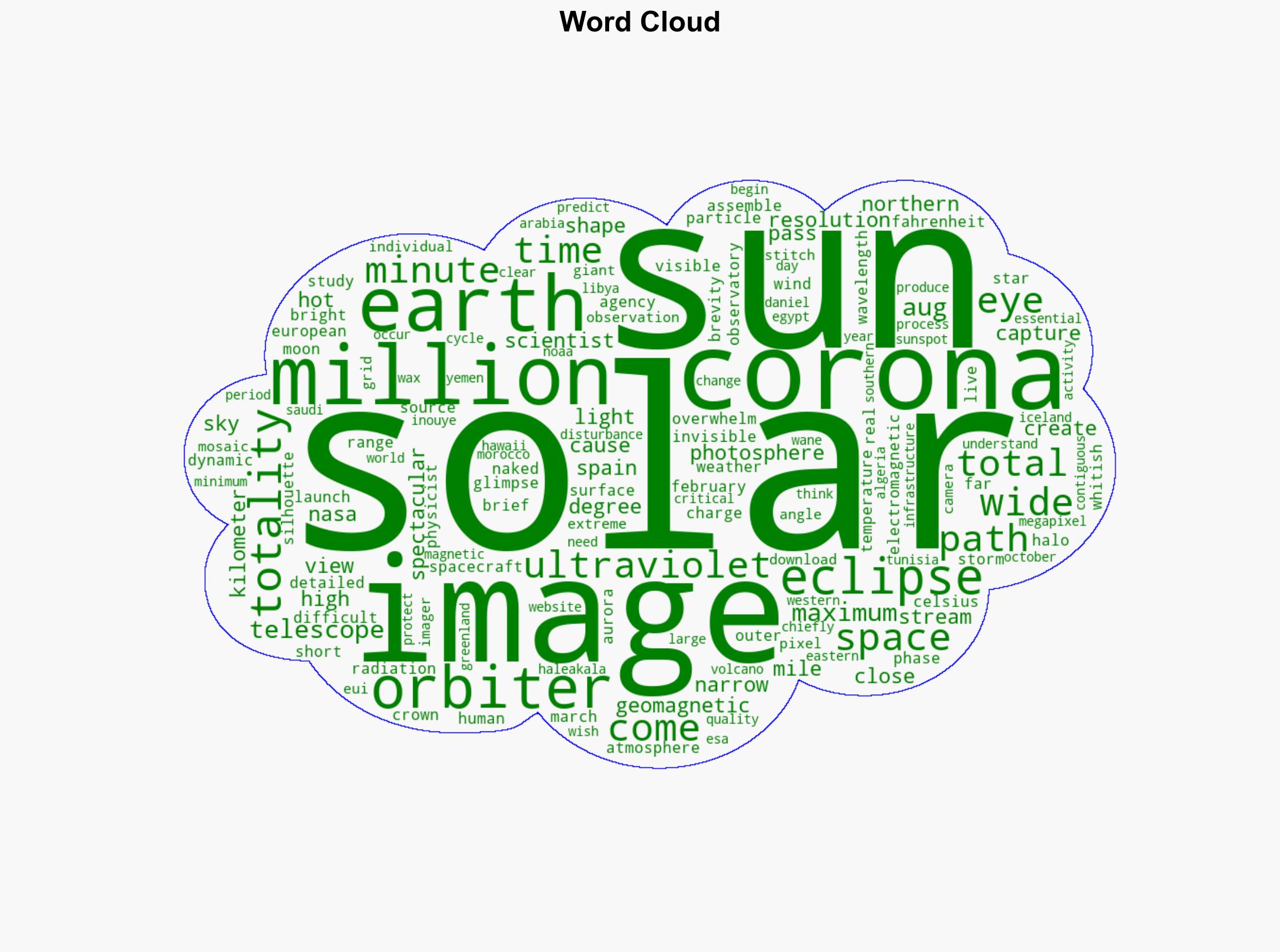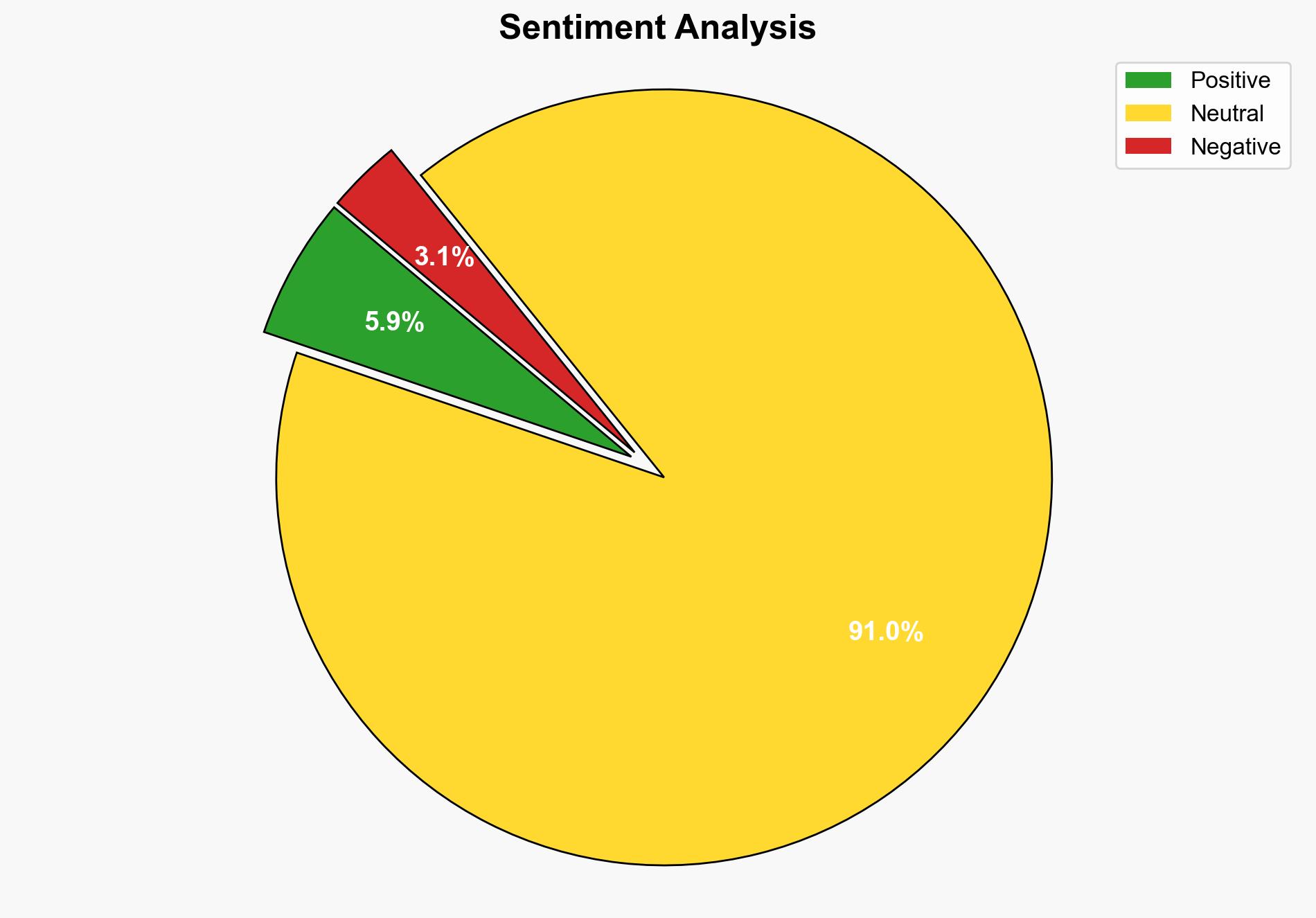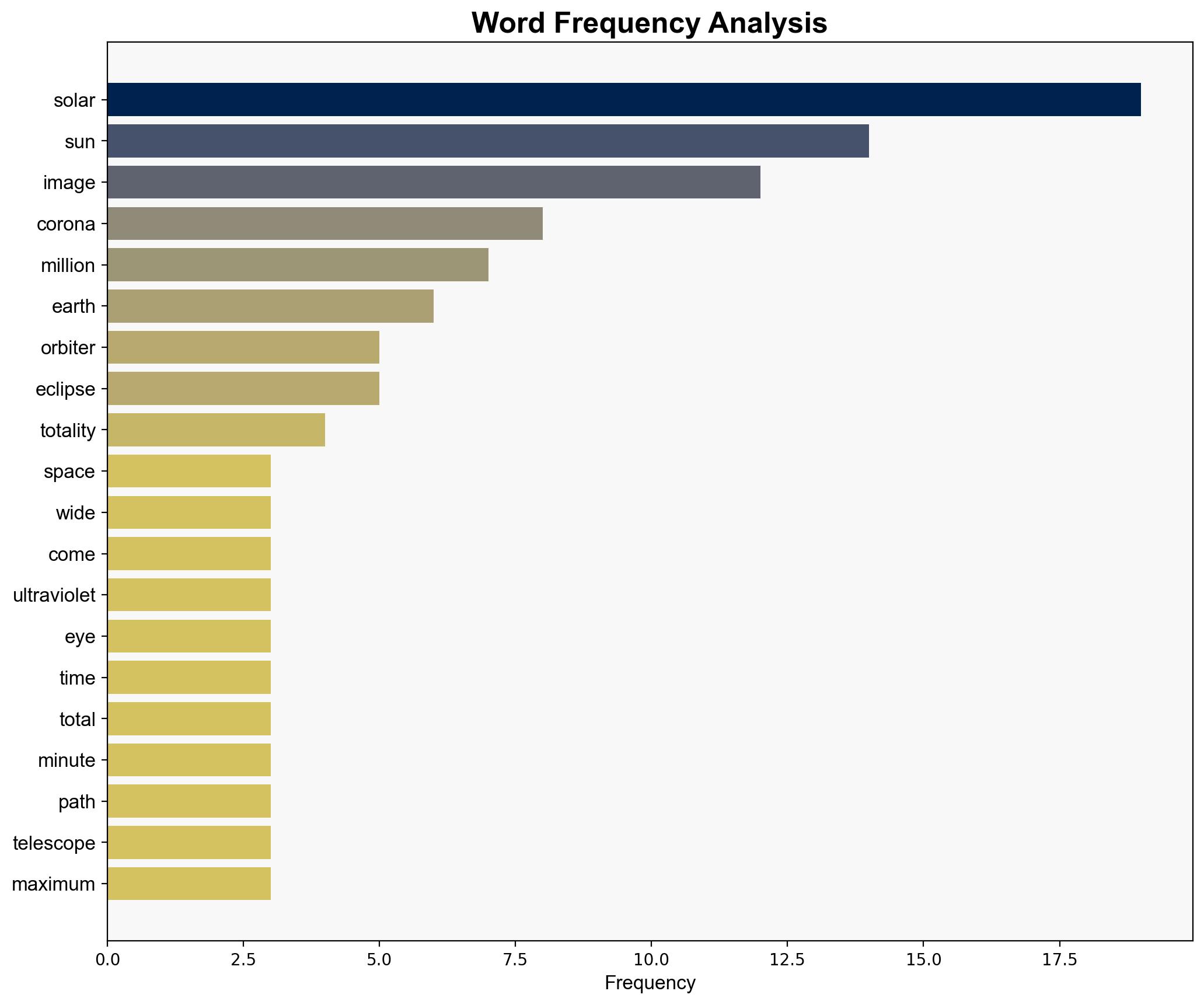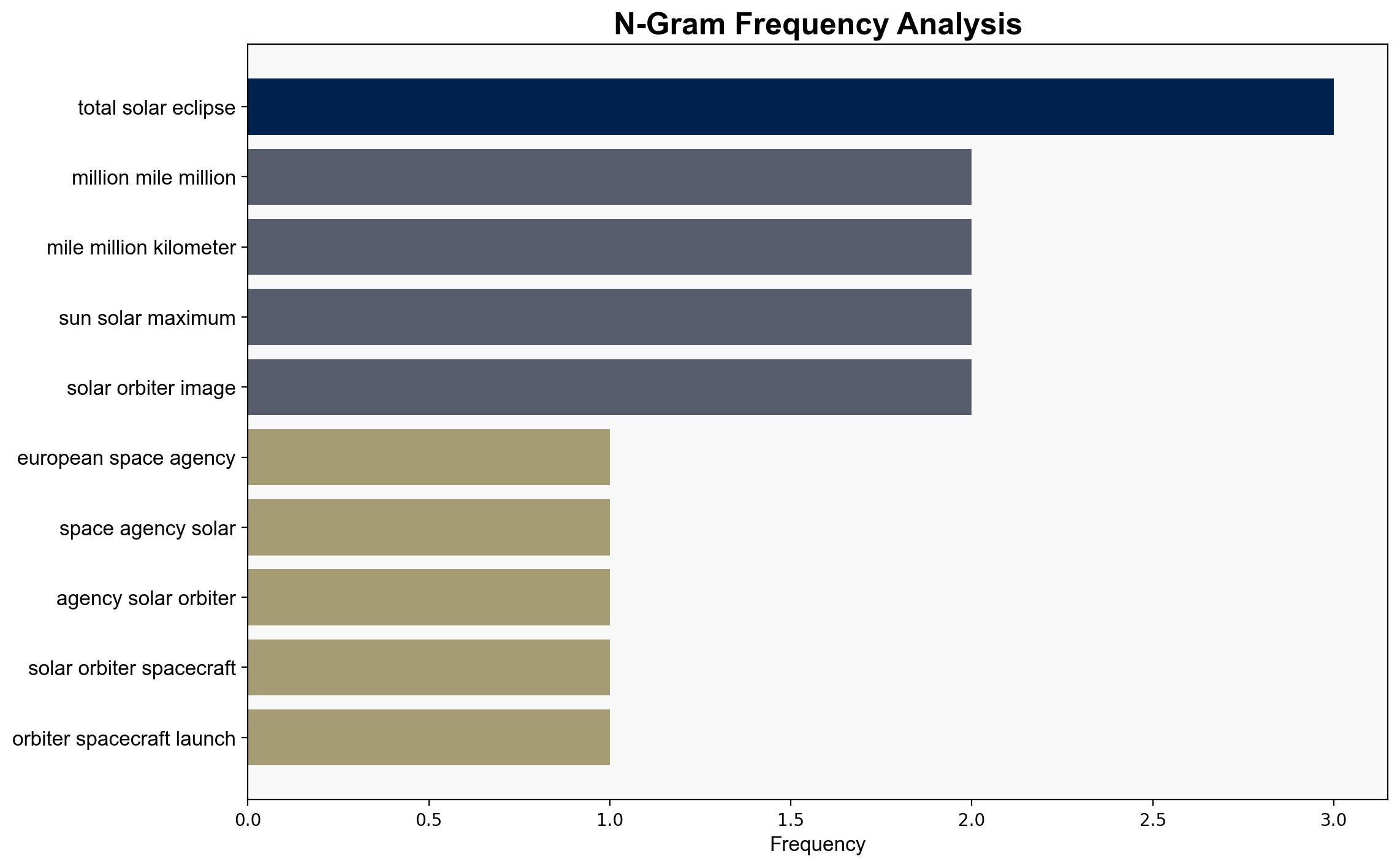Solar Orbiter Sends Back Jaw-Dropping Image Of Suns Corona – Forbes
Published on: 2025-04-27
Intelligence Report: Solar Orbiter Sends Back Jaw-Dropping Image Of Sun’s Corona – Forbes
1. BLUF (Bottom Line Up Front)
The European Space Agency’s Solar Orbiter has captured unprecedented high-resolution images of the Sun’s corona, offering critical insights into solar phenomena that impact space weather and geomagnetic disturbances on Earth. These findings are pivotal for understanding and predicting solar activity, which can affect global infrastructure and communication systems. It is recommended that government agencies prioritize collaboration with space agencies to enhance predictive capabilities and mitigate potential disruptions.
2. Detailed Analysis
The following structured analytic techniques have been applied to ensure methodological consistency:
SWOT Analysis
Strengths: Advanced imaging technology provides detailed views of the Sun’s corona, enhancing scientific understanding.
Weaknesses: Limited observation periods due to the spacecraft’s orbit and potential data transmission delays.
Opportunities: Improved solar activity predictions can protect critical infrastructure and enhance space weather forecasting.
Threats: Increased solar activity during solar maximum could pose risks to satellites and power grids.
Cross-Impact Matrix
The interaction between solar activity and Earth’s geomagnetic environment could amplify risks to communication systems and power grids, necessitating robust protective measures.
Scenario Generation
Best Case: Enhanced predictive models lead to effective mitigation strategies, minimizing disruptions.
Worst Case: Unanticipated solar events cause widespread infrastructure failures.
Most Likely: Incremental improvements in prediction and response capabilities reduce but do not eliminate risks.
3. Implications and Strategic Risks
The increased understanding of the Sun’s corona and solar activity patterns presents both opportunities and risks. Enhanced predictive capabilities can mitigate the impact of geomagnetic storms on critical infrastructure. However, as solar maximum approaches, the potential for significant disruptions increases, necessitating proactive measures to safeguard national security and economic stability.
4. Recommendations and Outlook
- Strengthen partnerships with international space agencies to improve data sharing and predictive models.
- Invest in infrastructure resilience to withstand potential geomagnetic disturbances.
- Develop scenario-based contingency plans to address varying levels of solar activity impact.
5. Key Individuals and Entities
Daniel Inouye Solar Telescope, European Space Agency, NASA.
6. Thematic Tags
(‘space weather’, ‘solar activity’, ‘infrastructure resilience’, ‘international collaboration’)





